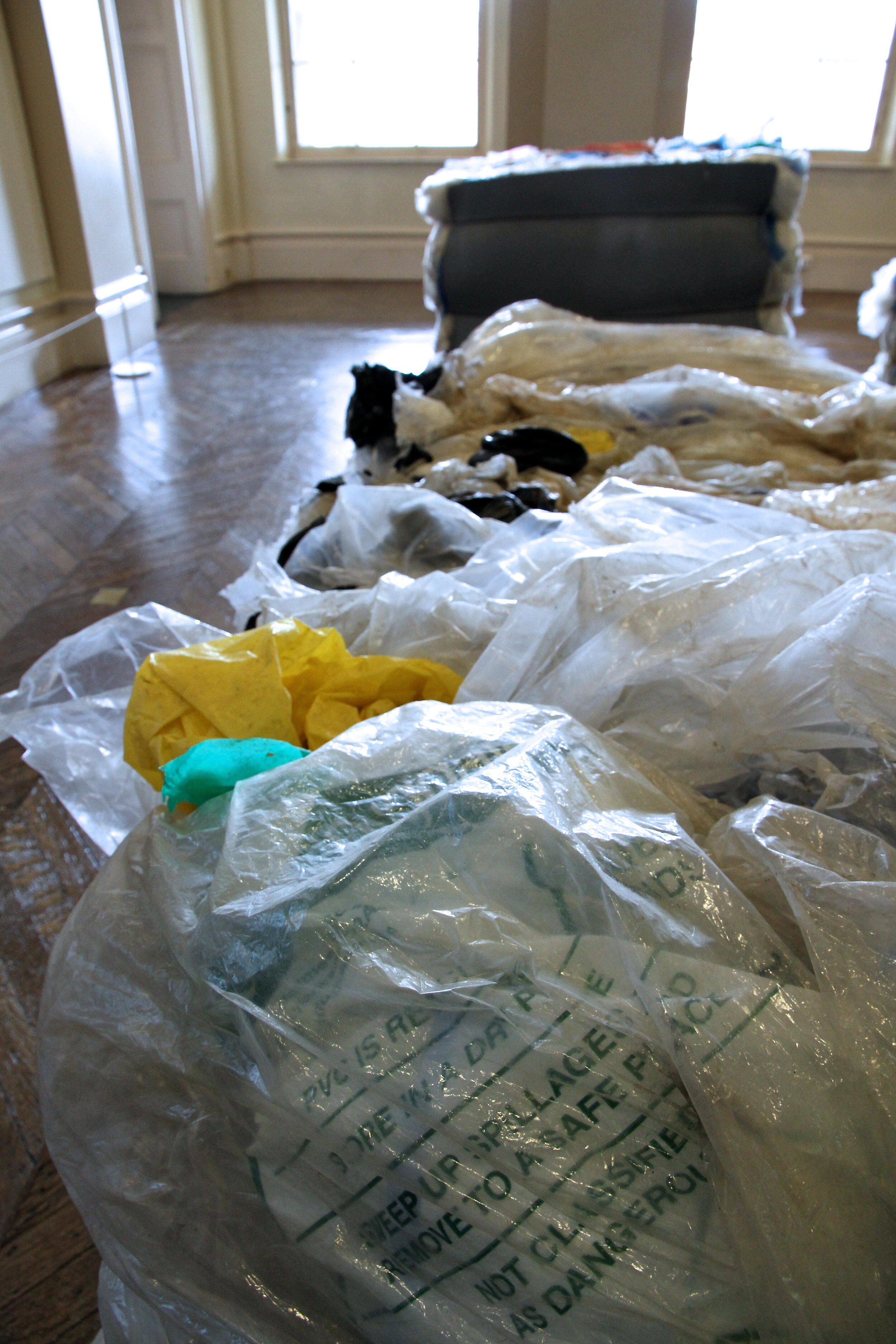
Solo Show / Walker Art Gallery
“Strangers in a Strange Land’ (2013) highlights the manufacturing processes that feed both profit and consumer demand. It considers how the planet is left to shoulder the burden of our waste. In examining these processes, Woolston finds emotive yet parallel symbols and sites - from stray dogs to people on the fringes of society, from municipal waste to a natural burial ground.
The artwork responds visually to the architecture of the space in which it sits. Woolston’s use of discarded material makes reference to Carl André’s Equivalent VIII (1966,Tate collection), a sculpture created from 120 firebricks. Woolston says that the bales of plastic she uses, like André’s bricks, possess “a physical duality of meaning. They are ‘waste’ yet embody ‘value’. Their contents are discarded, yet harvested.”
The exhibition’s title is taken from the Walker’s picture Strangers in a Strange Land, painted in 1889 by Albert Starling. Woolston incorporates the painting, featuring refugee children, as a traditional classical manifestation of her themes.
Within the installation, Woolston highlights waste cycles that are known as ‘open’ and ‘closed loop’ processes. In open loops, there is nothing in place to address the waste a given process creates. In closed loops, solutions exist or evolve and waste is transformed.
During a 2012 residency in Istanbul, Woolston documented one such solution - the ‘Papermen’ - unofficial collectors, sorters and recyclers of the city’s waste. In the same city, stray dogs are micro-chipped in an effort to bring a sense of order to these ‘waste’ creatures. Woolston’s Istanbul photographs are incorporated within this installation.
Elsewhere, a natural burial ground in South Warwickshire is seemingly the solution to closing the loop on a human life cycle – a place for ecological burial, returning the body to the earth. Yet even here, Woolston observes man-made materials amongst the decaying floral tributes.
The plastic bales central to this installation, destined for recycling, are emblematic of another journey towards a closed loop.
Woolston unites these separate elements and materials, together with Starling’s painting, as a single artwork – a looped cycle in its own right. She aims to connect the viewer with a subject that many find it all too easy to ignore, and says:
“Central to this work is the notion of ‘reconnection’ - to the waste we create, to the soil to which we return, and to the processes that marry the two.”
Robyn Woolston











